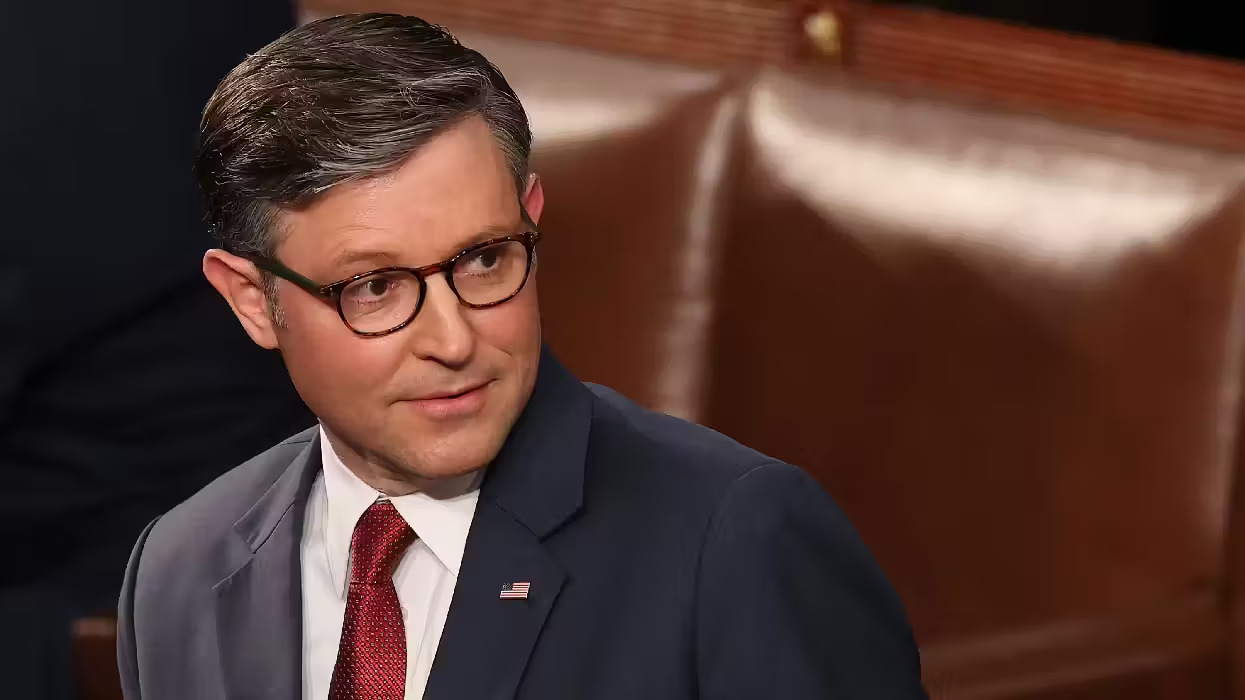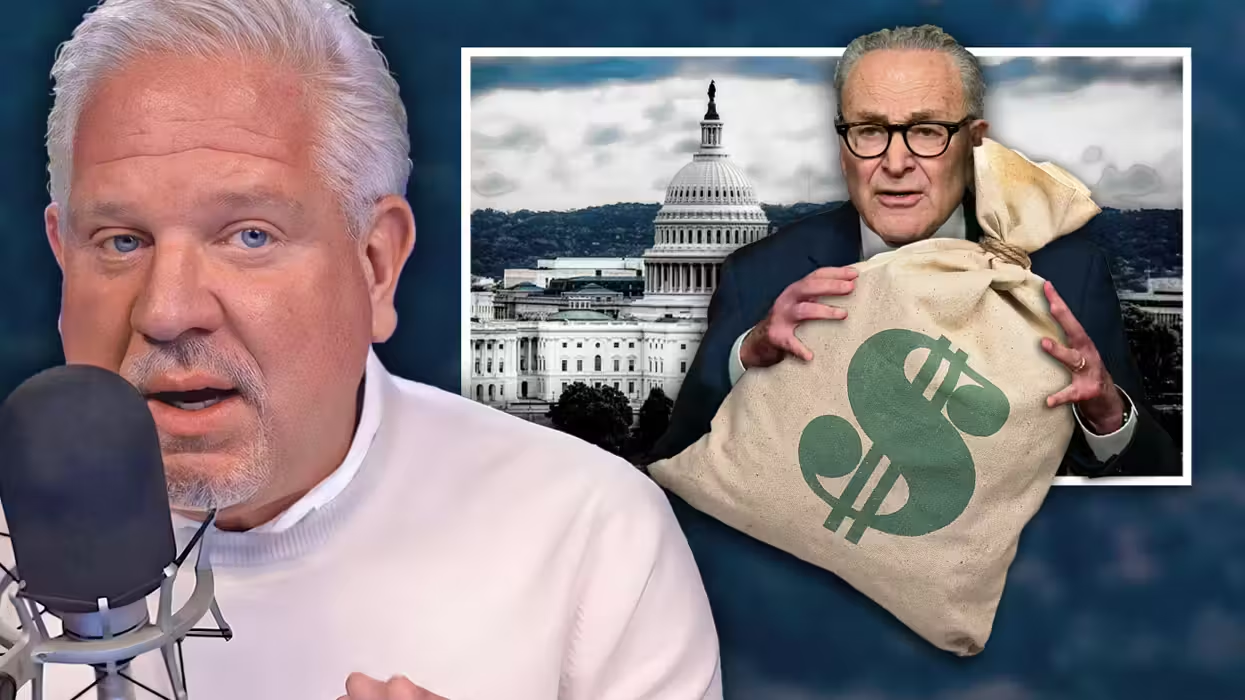
© 2025 Blaze Media LLC. All rights reserved.
Where did the money go?
[Editor's note: at the time of this article's publication, a spokesperson for the Federal Reserve could not be reached for comment.]
As the title of this article suggests, the Federal Reserve did something last week that appears to have avoided scrutiny by major media outlets.
But it didn’t avoid detection by everyone.
According to the sharp-eyed writers at Zero Hedge, it looks as if the Fed shifted $88 billion to undisclosed recipients.
“How did that happen and how did we not hear about it?” you’re probably asking yourself. Here’s your answer: because the details are buried deep in the Fed's accounting books.
To make sense of Zero Hedge’s findings, let’s go over the basics.
The Federal Reserve's balance sheet, “despite its obscurity,” is fairly straightforward. Assets on the left, liabilities and equities on the right.
Anyone familiar with balance sheets understands that assets are what you have (cash, inventories, etc.) whereas liabilities are what you owe (accounts payable, accrued expenses, etc). Therefore, it was with some bewilderment that the folks at Zero Hedge noticed this:
In today's one-day delayed issue of the Fed's H.4.1, literally the very last number on the very last subpage in the weekly update reveals something quite disturbing . . .
Pictured above: "disturbing"
. . . the Fed's "other" non-reserve based factors absorbing liquidity. And specifically, the actual number, which rose by an unprecedented $88 billion in one week to an all time high of $115 billion for the week ended November 23!
By all appearances, a domestic financial institution was, in the words of the Hedge, "the willing and ready recipient of an incremental $88 billion in 'reserves'- read cold, hard cash."
How were the deposits divvied up and who got what? We don't know; it's not stated on the balance sheet.
This has left many wondering what, exactly, went on behind the Fed’s closed doors.
There are a few theories. Some analysts have claimed that the $88 billion could have been moved around to fund government-sponsored entities (GSEs) such as Fannie May and Freddie Mac.
However, as far as we know, “Fannie tapped the Treasury for $7.8 billion in Q3, while the quarterly Freddie Mac injection amounted to $6.0 billion,” Zero Hedge reports.
“In other words the combined $13.8 billion cash draw need would almost explain the $88 billion weekly shift . . . if only it weren't for the other $74.2 billion.”
Other theories posit that it was merely a "plug" to a "plug," such as Fed capital, and that "reading too much into it may simply be an exercise in futility."
However, just like the claim that the shift was to the benefit of GSEs, there are some problems with this explanation:
. . . if it is a plug, what it is "plugging" is an $85 billion drop in F.R. bank reserves which declined from $1.575 trillion to $1.489 trillion, an $85 billion decline.
So what are the implications?
"Is the 'Other' deposit merely a slush fund to convert 'on the books' reserves into an 'other' use of proceeds?" asks Zero Hedge. "In other words, the question is - just what event is it that caused the rotation of $85 billion in reserves into $88 billion in 'Other' liquidity absorbing factor . . ."
Before we get any further into this, let’s recap.
Here is what we know: the Fed's "Other," non-reserve based factors absorbing liquidity is at an all-time high of $115 billion, having just risen by $88 billion. Part of the reason that this is so disconcerting is because the Fed has not explained this jump and has simply filed it away under "Other."
Accountants—at least on the corporate level—understand that when a liability is listed as "Other," it can mean just about anything.
Ordinarily, entities are only put under the heading "Other" when their costs/amount is less than 5 percent of total liabilities.
The figure of $88 billion is only about 3 percent of total liabilities on the Fed's balance sheet. Therefore, technically speaking, listing the $88 billion bump as "Other" is not unreasonable.
However, there are exceptions to the 5 percent rule. For example, if the transaction is highly unusual or subject to wide economic swings, or changing management risk estimates, it should be explained in a foot note or equivalent commentary in the financial statements. At a minimum, the $115 line item should have some type of description other than, well, "Other."
Furthermore, "Other" should be explained if the transaction is more material as part of a subcaption. As you can see in the spreadsheet below, the major caption “Deposits” amounts to $1,646,690 and the subcaption "Other" ($115) is 7 percent of that amount and the $88 is 5.3 percent of that amount.
 Click to see larger image
Click to see larger image
Therefore, good disclosure would dictate that the Fed should explain the $115 or $88, or at least have a specific caption other than "Other."
Instead, we are left with this question: "What event is it that caused the rotation of $85 billion in reserves into $88 billion in 'other' . . . just what was it that caused US banks to demand a record amount of effectively under the table cash from the Fed?"
Perhaps this will help. Here is the definition of "Other" by the St. Louis Fed :
"Other deposits at Federal Reserve Banks include balances of international and multilateral organizations . . . such as the International Monetary Fund, United Nations, International Bank for Reconstruction and Development (World Bank); the special checking account of the ESF [European Social Fund] . . . and balances of a few U.S. government agencies, such as the Fannie Mae and Freddie Mac."
Just to be clear, among the GSEs that are eligible for an “Other” transfusion, Fannie got $7.8 billion and Freddie got $6 billion. Where did the other $74.2 billion of the $88 billion go?
It might be important to note that entities such as the "IMF, the UN, the World Bank and . . . the ESF [European Social Fund] are all part of the 'other' reserve 'use of funds' destination" and they are desperately in need of cash.
"In other words," writes Zero Hedge ". . . it sure wasn't only (if at all) the GSEs, [that] had a massive capital shortfall and had to resort to Fed deposits. And by the looks of things, these could have easily been 'international' entities tasked with bailing out the world such as the IMF."
The bottom line is this: it is unclear whether the IMF or ECB received Fed deposits and it is unclear which--if any--of the GSEs got it.
That being said, does it really come as a surprise to politicians in D.C. that there is so little trust in government institutions?

Want to leave a tip?
We answer to you. Help keep our content free of advertisers and big tech censorship by leaving a tip today.
Want to join the conversation?
Already a subscriber?
more stories
Sign up for the Blaze newsletter
By signing up, you agree to our Privacy Policy and Terms of Use, and agree to receive content that may sometimes include advertisements. You may opt out at any time.
Related Content
© 2025 Blaze Media LLC. All rights reserved.
Get the stories that matter most delivered directly to your inbox.
By signing up, you agree to our Privacy Policy and Terms of Use, and agree to receive content that may sometimes include advertisements. You may opt out at any time.





